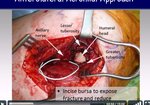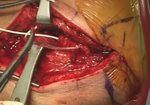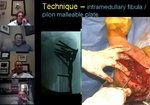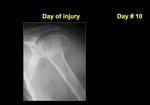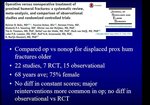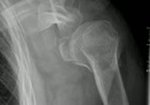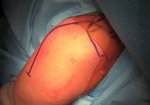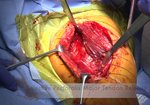Intramedullary nailing has advantages over the other techniques in treating PHFs, including limited soft tissue ...
read more ↘ injury, preservation of blood supply to the humeral head, and shortened surgical time. However, fractures addressed by this technique often result in secondary reduction loss followed by malunion associated with proximal screw migration and screw perforation into glenohumeral joint due to overwhelming stress between the screws and the humeral head in the nailing fixation construct, especially in the elderly and osteoporotic patients[8-10]. Despite updates to this technique, including new designs of the straight nail, screw-in-screw structure, noose structure between locked screw and main nail, tension band suture, and cement augmentation of the screws, the complication rate remains high due to insufficient anti-varus and anti-rotational capacities of the intramedullary nail fixation and high stress at the bone-implant interface.
To enhance the anti-varus and anti-rotational capabilities of intramedullary nail fixation, we designed a novel endosteal anatomical support nail (EASN), which replaces the proximal part of the angle-stable proximal humerus nail (MultiLoc by Synthes, West Chester, PA, USA) with an endosteal torus construct. The endosteal torus construct involves an endosteal anatomical support (EAS) construct, with a flat plane that allows humeral head fragments to be directedly fixed on it and medial shape compatible with medial side of medullary cavity of the proximal humerus. When EASN is placed into the medullary canal through the fractured lateral windows of the proximal humerus, instead of via the entry point made at the humeral head, the anatomical support plane directly supports the humeral head and remains in close contact with the medial cortex of the proximal humerus. To ensure the restoration of the original humeral head structure when EAS nail is implanted, the endosteal support plane was designed using the MIMICS software according to the intramedullary geometry of the proximal humerus.
↖ read less
read more ↘ injury, preservation of blood supply to the humeral head, and shortened surgical time. However, fractures addressed by this technique often result in secondary reduction loss followed by malunion associated with proximal screw migration and screw perforation into glenohumeral joint due to overwhelming stress between the screws and the humeral head in the nailing fixation construct, especially in the elderly and osteoporotic patients[8-10]. Despite updates to this technique, including new designs of the straight nail, screw-in-screw structure, noose structure between locked screw and main nail, tension band suture, and cement augmentation of the screws, the complication rate remains high due to insufficient anti-varus and anti-rotational capacities of the intramedullary nail fixation and high stress at the bone-implant interface.
To enhance the anti-varus and anti-rotational capabilities of intramedullary nail fixation, we designed a novel endosteal anatomical support nail (EASN), which replaces the proximal part of the angle-stable proximal humerus nail (MultiLoc by Synthes, West Chester, PA, USA) with an endosteal torus construct. The endosteal torus construct involves an endosteal anatomical support (EAS) construct, with a flat plane that allows humeral head fragments to be directedly fixed on it and medial shape compatible with medial side of medullary cavity of the proximal humerus. When EASN is placed into the medullary canal through the fractured lateral windows of the proximal humerus, instead of via the entry point made at the humeral head, the anatomical support plane directly supports the humeral head and remains in close contact with the medial cortex of the proximal humerus. To ensure the restoration of the original humeral head structure when EAS nail is implanted, the endosteal support plane was designed using the MIMICS software according to the intramedullary geometry of the proximal humerus.
↖ read less
Comments 0
Login to view comments.
Click here to Login
